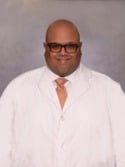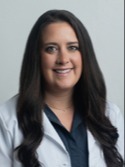lane Gastroenterology
WE ARE HERE FOR YOU
Nothing is more important than your health.
If it's time for your annual check-up, or you just aren't feeling well and need medical attention, give us a call
To request an appointment, call 225-658-6780.
For Emergencies, please call 911.
-----------------------------------------------------------------------------------------------------------------------------------------------------------------------------------------------------------
Baton Rouge Area Gastroenterology
A Gastroenterologist specializes in diseases and symptoms of the digestive tract which includes the esophagus, stomach, small and large intestines, liver, biliary tract, and pancreas.
The most common conditions and symptoms treated include:
- heartburn
- acid reflux
- abdominal pain
- diarrhea
- incontinence
- irritable bowel syndrome
- constipation
- bleeding
- nausea and vomiting
- hepatitis
- hemorrhoids
- gallstones
Specialized Training of Gastroenterologists
Gastroenterologists receive specialized training in the evaluation and treatment of the digestive system using special procedures such as colonoscopy and upper endoscopy.
After completing college and medical school, a gastroenterologist receives three years of training in general internal medicine and an additional three years of specialized training focused on the digestive system, which includes specific and intensive training in the safe and effective performance of colonoscopy and upper endoscopy procedures.
Our physicians are fellowship trained and certified by the American Board of Internal Medicine and have fulfilled the requirements for the sub-specialty Board of Gastroenterology.
What to Expect at a Gastroenterology Appointment
A typical gastrointestinal appointment usually involves a consultation and physical examination, and may include specialized studies such as X-rays or other imaging studies. Both colonoscopy and upper endoscopy procedures involve the passage of flexible lighted instruments to view the inside of the digestive tract and allows the physician to evaluate for precancerous polyps, inflammation or sources of bleeding.
A variety of therapeutic interventions can also be performed including biopsies, control of bleeding, removal of polyps, injection of medications, and stretching the GI tract.
A physician referral may be required, however most patients are usually referred to us by another provider for a specific evaluation or treatment. Once completed, we will provide your physician with a summary of our findings and recommendations. While we may provide the care for a specific digestive problem, we will usually refer you back to your physician for ongoing care. We see adult patients 18 and older.
Common Gastroenterology Procedures We Perform
Capsule Endoscopy
Capsule Endoscopy is a revolutionary new technique to view the small intestine, also called the small bowel. Capsule Endoscopy allows your physician to examine the three portions of the small intestine (duodenum, jejunum, and ileum) that could not be directly visualized previously.
How it Works
For the examination, you will swallow a vitamin-pill sized video capsule. This capsule has its own camera lens and light source, and takes two video images each second. While the video capsule travels through your digestive tract, images are sent to a data recorder you will wear on a waist belt. Afterwards, your doctor will view the images on a video monitor.
Reasons for the Exam
A Capsule Endoscopy procedure is used to determine the cause of recurrent or persistent symptoms when other diagnostic procedures such as upper endoscopy or colonoscopy fail to provide a definitive reason for your symptoms. This procedure may be recommended if you have:
- unexplained bleeding
- anemia due to low iron stores
- diarrhea
- abnormal x-ray of the small intestine
- suspicion of other small intestine diseases
Risks and Side Effects
Examination of the small intestine with capsule endoscopy is generally safe. Complications are uncommon. To ensure the best results, inform your doctor if you have or had:
- A pacemaker, cardiac defibrillator or other implanted devices
- Trouble swallowing
- Possible obstruction or stricture of the GI tract
- History of GI surgery
- Radiation of the abdomen for cancer
Due to the metallic components of the capsule, MRI studies should not be performed until the capsule has passed out of the body. If you require an MRI study, notify the ordering physician that you have recently had capsule endoscopy and that the capsule must be passed out of the body before the MRI is performed.
What to Expect
You will be asked to wear a ‘utility belt’ that houses the data recorder and battery pack. The utility belt must be worn at least 8 hours to gather sufficient data and diagnostic information.
Adhesive pads attached to conductive leads (similar to EKG leads) will be placed on your abdomen and connected to a data recorder.
You will then swallow the capsule to begin the study.
You can go to work or engage in your usual daytime activities, but avoid any strenuous physical activity especially if it involves sweating.
After 8 hours, you will return to the clinic to have the sensors removed and the images from the data recorder downloaded into a computer. Results are usually available within 72 hours.
You don’t need to collect the capsule – it will pass through your intestines and can safely be flushed down the toilet.
Colonoscopy Screening
The most common symptom of colon cancer is having no symptoms at all. Our team is helping beat cancer every day thanks to one simple procedure – a screening colonoscopy. And when you choose to do your screening at Lane Gastroenterology, you’ll get the level of care and the peace of mind only a specialist can offer. SEE MORE
A colonoscopy screening allows your doctor to examine the lining of your large intestine (colon) for abnormalities by inserting a thin flexible tube, as thick as your finger, into your anus and slowly advancing it into the rectum and colon. This instrument, called a colonoscope, has its own lens and light source and it allows your doctor to view images on a video monitor.
Why is colonoscopy SCREENING recommended?
A colonoscopy screening is most commonly recommended to test for colorectal cancer. Colorectal cancer is the third leading cause of cancer deaths in the United States. Annually, approximately 150,000 new cases of colorectal cancer are diagnosed in the United States and 50,000 people die from the disease. It has been estimated that increased awareness and screening would save at least 30,000 lives each year. Screening colonoscopy is a preventative procedure and covered by most insurance. Colonoscopy may also be recommended by your doctor to evaluate for symptoms such as bleeding and chronic diarrhea.
A colonoscopy screening is painless. You will be given a sedative to help you relax and ensure there is no discomfort. The procedure itself usually takes 15 to 60 minutes, depending if polyps are present or not.
Polyps are abnormal growths in the colon lining that are usually benign (noncancerous). They can vary in size from a tiny dot to several inches. Your doctor can’t always tell a benign polyp from a malignant (cancerous) polyp by its outer appearance, so he might send removed polyps for analysis. Because colon cancer begins in polyps, removing them is an important means of preventing colorectal cancer. If your doctor thinks an area needs further evaluation, he might take a biopsy (a sample of the colon lining) to be analyzed.
Your physician will explain the results of the examination to you, although you’ll probably have to wait for the results of any biopsies performed.
Upper Endoscopy
Upper Endoscopy allows your doctor examine the lining of the upper part of your gastrointestinal tract, which includes the esophagus, stomach and the first portion of the small intestine called the duodenum.
A thin, flexible tube called an endoscope is used, which has its own lens and light source, to transmit the images on a video monitor. Your doctor might also refer to upper endoscopy as an upper GI endoscopy or EGD (esophagogastroduodenoscopy).
Why have an Upper Endoscopy?
Upper Endoscopy helps your doctor to evaluate symptoms of persistent upper abdominal pain, nausea, vomiting, or difficulty swallowing. It is the best test for finding the cause of bleeding in the upper gastrointestinal tract. It is also more accurate than X-ray films for detecting inflammation, ulcers and tumors of the esophagus, stomach and duodenum.
Your doctor may also perform an upper endoscopy to obtain a biopsy or small tissue samples. A biopsy helps distinguish between benign and malignant (cancerous) tissues. Biopsies are taken for many reasons, even if cancer is not suspected. For example, a biopsy is used to test for H. pylori, the bacteria that cause ulcers.
ERCP
ERCP is short for Endoscopic Retrograde CholangioPancreatography. It is a specialized technique used to study the bile ducts, pancreatic duct and gallbladder.
Endoscopic refers to the use of an instrument called an endoscope - a thin, flexible tube with a tiny video camera and light on the end. The endoscope is used to diagnose and treat various problems of the GI tract, including the stomach, intestine, and other parts of the body that are connected to the intestine, such as the liver, pancreas, and gallbladder.
Retrograde refers to the direction in which the endoscope is used to inject a liquid enabling X-rays to be taken of the parts of the GI tract called the bile duct system and pancreas. The process of taking these X-rays is known as cholangiopancreatography. Cholangio refers to the bile duct system, pancrea to the pancreas.
X-ray equipment is then used to examine and take pictures of the dye outlining the ducts. In this way, widening, narrowing, or blockage of the ducts can be pinpointed. Some of the problems that may be identified during ERCP can also be treated through the endoscope. For example, if a stone is blocking the pancreatic or common bile duct, it is usually possible to remove it.
ERCP is done under sedation or anesthesia and usually lasts between 30 and 90 minutes. If the x-ray pictures taken during ERCP show a stone or blockage in the ducts, the doctor may be able to treat the problem right away. Common treatments are sphincterotomy, stone removal and stenting.
- This involves making a small cut in the Ampulla of Vater (using an electric knife) to enlarge the opening to the bile duct and/or pancreatic duct. This is done to improve the drainage or to remove stones in the ducts. Removed stones are usually dropped in the intestine, and pass through quickly.
- Stone removal. Small stones may be removed by small balloons, baskets or other devices.
- A stent is a tube which is placed in a blocked or narrowed duct to improve drainage. The narrowing may need to be stretched (dilated) before the stent is placed. A few stents are designed to pass out into the intestine after a few weeks when they have done their work. Other stents have to be removed or changed after 3-4 months.
How is ERCP performed?
During ERCP, your doctor will pass a thin, flexible tube called an endoscope through your mouth, esophagus and stomach into the duodenum (first part of the small intestine) that allows your doctor to see inside your bowels. After seeing the common opening to the ducts from the liver and pancreas, your doctor will pass a narrow plastic tube called a catheter through the endoscope and into the ducts. He will then inject a contrast material (dye) into the pancreatic or biliary ducts and will take X-rays.
Common GI Conditions and Diseases We Treat
Abscess and Fistula
An abscess is a pocket of pus caused by infection from bacteria in the anal canal. A fistula is a tiny infected channel that develops in the presence of inflammation and infection, usually accompanied by some drainage. An abscess and fistula often occur together, most often with certain conditions that reduce the body’s immunity such as Crohn’s disease. If the opening of the fistula seals over before the fistula is cured, an abscess may develop behind it. Treatments vary.
Anemia
Anemia is another way of saying “low blood count”, or insufficient red blood cells to carry oxygen throughout the body, because of an underlying disease or condition such as blood loss, inadequate nutrition or malabsorption, bone marrow failure, kidney disease, or illness and malignancies. Treatment of the primary disease or condition generally cures anemia. When iron supplements are prescribed, avoid dairy products and antacids since they can interfere with iron absorption. Foods high in iron include raisins, meat/liver, fish, poultry, egg yolk, peas, beans and whole grain breads.
Ascites
A condition caused by excess fluid collecting in the abdominal cavity, ascites is usually caused by advanced liver failure, but may also be due to heart failure, kidney disease or cancer. Treatment depends on the underlying cause.
Barrett's Esophagus
Celiac Disease
Celiac disease is a condition found in individuals with an allergy to gluten (found in wheat, barley and rye). The allergic reaction causes inflammation in the lining of the small intestine, causing the bowel to become inflamed and not properly absorb nutrition. The cause is unknown, and the only treatment is to avoid foods that contain gluten. Switching to products that contain only rice, corn, potato or soybean flours is recommended.
Cirrhosis of the Liver
Cirrhosis has many causes, the most common being chronic alcoholism, direct injury to the liver cells from hepatitis, or indirect injury from inflammation or obstruction of the bile ducts. Treatment is aimed at stopping or delaying the progression and reducing complications, along with good nutrition and medication to control symptoms.
Colitis
Colitis is an inflammation of the large intestine or colon that can cause abdominal pain, diarrhea, dehydration, abdominal bloating, increased intestinal gas, and bloody stools. Treatment depends on the underlying cause which can be infection, inflammation or a lack of blood flow, among others.
Constipation
Constipation is a symptom, not a disease. Characterized by infrequent or hard bowl movements, constipation includes having pain during a bowel movement, an inability to “go” after trying for more than 10 minutes, or having a bowel movement fewer than three times per week or no bowel movement for three or more days. Everyone’s habits and patterns are different, so “normal” varies from person to person, including not having a bowel movement every day. You can help prevent constipation by drinking plenty of water and eating a high-fiber diet along with regular exercise. Remedies include stool softeners or laxatives. Call your doctor right away if you have sudden constipation with abdominal cramps and an inability to pass gas or stool as it could be an intestinal blockage.
Crohn's Disease
Diarrhea
Diarrhea is defined as loose, watery stools occurring more than three times in one day. It is a common problem that usually lasts a day or two and goes away on its own. Prolonged diarrhea can be a sign of other problems. It can cause dehydration, meaning the body lacks enough fluid to function properly, which is very dangerous in children and the elderly and must be treated promptly. Most often diarrhea is temporary and caused by a bacterial infection, viral infection, food intolerance, or a reaction to medication that will run its course. More serious causes are due to intestinal diseases or functional bowel disorders that should be treated by your physician.
Diverticulosis and Diverticulitis
Esophageal Cancer
This is a rare cancer caused by a malignant tumor occurring on the esophagus, the tube that carries food from the mouth to the stomach. Surgery is the preferred treatment option, followed by chemotherapy or radiation therapy.
Fissure
An anal fissure is a small tear in the lining of the anus that can occur with straining and a change in bowel habits. Most heal by themselves within a few weeks. Stool softeners can help reduce pain and avoid constipation and straining.
Gallstones
Gallstones are small, pebble-like substances that develop in the gallbladder. They form when bile, the liquid that helps the body digest fats, hardens into pieces of stone-like material. Bile is made in the liver, and then stored in the gallbladder until the body needs it. Gallstones can block the normal flow of bile if they move from the gallbladder and lodge in any of the ducts that carry bile from the liver to the small intestine. If any of the ducts remain blocked, severe damage or infection can occur in the gallbladder, liver, or pancreas, and if left untreated, the condition can be fatal. Treatment, if indicated, is usually surgical.
Gastritis
An inflammation of the lining of the stomach, gastritis is considered acute when the inflammation occurs suddenly and chronic when the inflammation occurs over a period of time. The most common symptoms are abdominal upset or pain, as well as belching, bloating and nausea. The most common causes are alcohol and medications such as aspirin or anti-inflammatory drugs like ibuprofen. Depending on the cause, some cases will resolve over time without treatment, or antacids may be prescribed to neutralize stomach acid and promote healing.
GERD
Gastro esophageal reflux disease, or GERD, is a condition in which the esophagus becomes irritated or inflamed because of acid backing up from the stomach. The primary symptom is acid reflux, or heartburn, which is felt as a burning sensation in the pit of the stomach or in the middle of the chest beneath the breastbone. Lying down or bending over usually makes the symptoms worse. Symptoms are usually experienced after eating and often triggered by fried, fatty foods, tomato products, citrus fruits and juices, chocolate, and caffeine. GERD is usually treatable with lifestyle changes and medications.
Heartburn and Acid Reflux
Heartburn, or acid reflux, is usually felt as a burning sensation behind the breastbone or a backup of bitter acid into the mouth. It is usually treatable with lifestyle changes (such as avoiding nicotine, fried/fatty foods, caffeine, citrus products, peppermint, and alcohol) and medications.
Hemorrhoids
One of the most common and nagging rectal disorders, hemorrhoids are rarely serious and often clear up by themselves. Hemorrhoids are enlarged blood vessels or veins in the anal or rectal area. They can occur on the outside of the anus where they feel like small bumps when wiping and often itch. Common causes are standing for long periods of time, constipation, diarrhea, pregnancy, obesity and straining during a bowel movement. If needed, banding is typically the most simple treatment method and can be done in an office setting. More serious cases will require surgery.
Hepatitis
Hepatitis is an inflammation of the liver and causes your liver to swell and stops it from functioning properly. It is caused and spread by a number of things including viral infections, blood, alcohol, drugs and chemicals. Symptoms include dark yellow urine, light-colored stool, yellowish eyes and skin, and feeling tired and sick to your stomach. There are various types of hepatitis, each with its own treatment program.
Indigestion
Also known as upset stomach, indigestion is a discomfort or burning feeling in the upper abdomen, often accompanied by nausea, bloating, belching, and sometimes vomiting. Most people experience indigestion as a result of eating too much, eating too quickly, eating high-fat foods, or eating during stressful situations. Avoiding certain foods and antacids are the most common methods of treatment.
Irritable Bowel Syndrome
Lactose Intolerance
Lactose is a type of sugar found in milk and dairy products. Lactose intolerance is the inability to digest lactose because of an enzyme deficiency in the intestine called lactase. Most people experience abdominal bloating, gas, cramps, and diarrhea within 30 minutes to two hours after consuming milk and dairy products. If symptoms are mild, avoiding dairy or buying milk that contains lactose may be sufficient. If you are more sensitive, reading labels to detect small amounts of lactose in prepared foods such as salad dressings, will be required in order to avoid them.
Pancreatitis
The pancreas is a gland that plays a key role in the digestive system. Pancreatitis is inflammation of the pancreas that usually begins as a sudden attack and is often caused by gallstones or alcohol abuse. Symptoms start with a gradual or sudden severe pain the center part of the upper abdomen going through to the back. If caused by gallstones, you may have to have your gallbladder removed to prevent further attacks. If caused by alcohol abuse, you should stop drinking altogether. Other causes may require specific treatments.
Peptic Ulcer
A peptic ulcer is a sore on the lining of the stomach and is very common. Some are caused by bacteria called H. pylori, while others are caused by long-term use of aspirin and ibuprofen. Stress and eating spicy food don’t cause ulcers, but can make them worse. H. Pylori peptic ulcers are treated with a combination of antibiotics and acid-suppressing and stomach protecting medications.
Primary Biliary Cholangitis
PBC is a chronic autoimmune disease of the liver. It results from a slow, progressive destruction of the small bile ducts of the liver, causing bile and other toxins to build up in the liver that often leads to end-stage liver disease. There is no cure for the disease, but medications are available to help slow the progression of the disease and prevent complications.
Rectal Bleeding
Rectal bleeding is always a sign that something is wrong. It is important to check with your physician to identify a specific cause and seek treatment. The main causes are hemorrhoids, fistulas, fissures, diverticulosis, proctitis, colitis, polyps, and cancer. Treatment will depend on the specific cause of bleeding.
Ulcerative Colitis
Ulcerative colitis is a chronic, recurring disease of the large intestine or colon that is characterized by inflammation and ulcers that form in the lining of the colon. Its cause is unknown, but some experts believe that defect in the immune system or an unidentifiable microorganism or germ may be responsible. Patients typically experience cramps, abdominal pain, and diarrhea that is sometimes severe or slightly bloody. The disease can affect nutrition and poor growth in children and teens, as well as liver, skin, eye and joint problems. Colitis can be treated with steroids or other anti-inflammatory drugs and immune system suppressors.











.png?width=110&height=110&name=lane%20badge%20(1).png)
